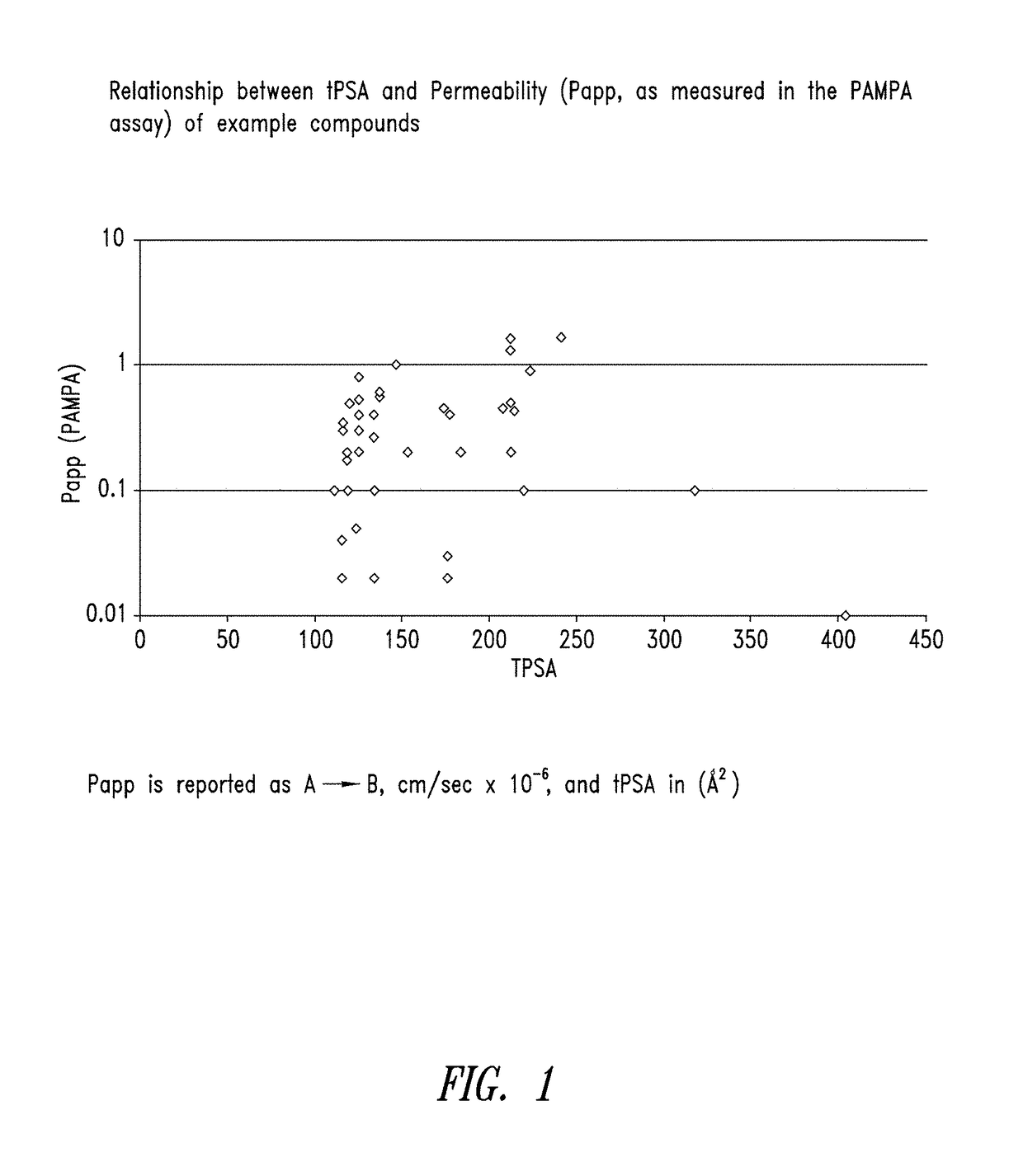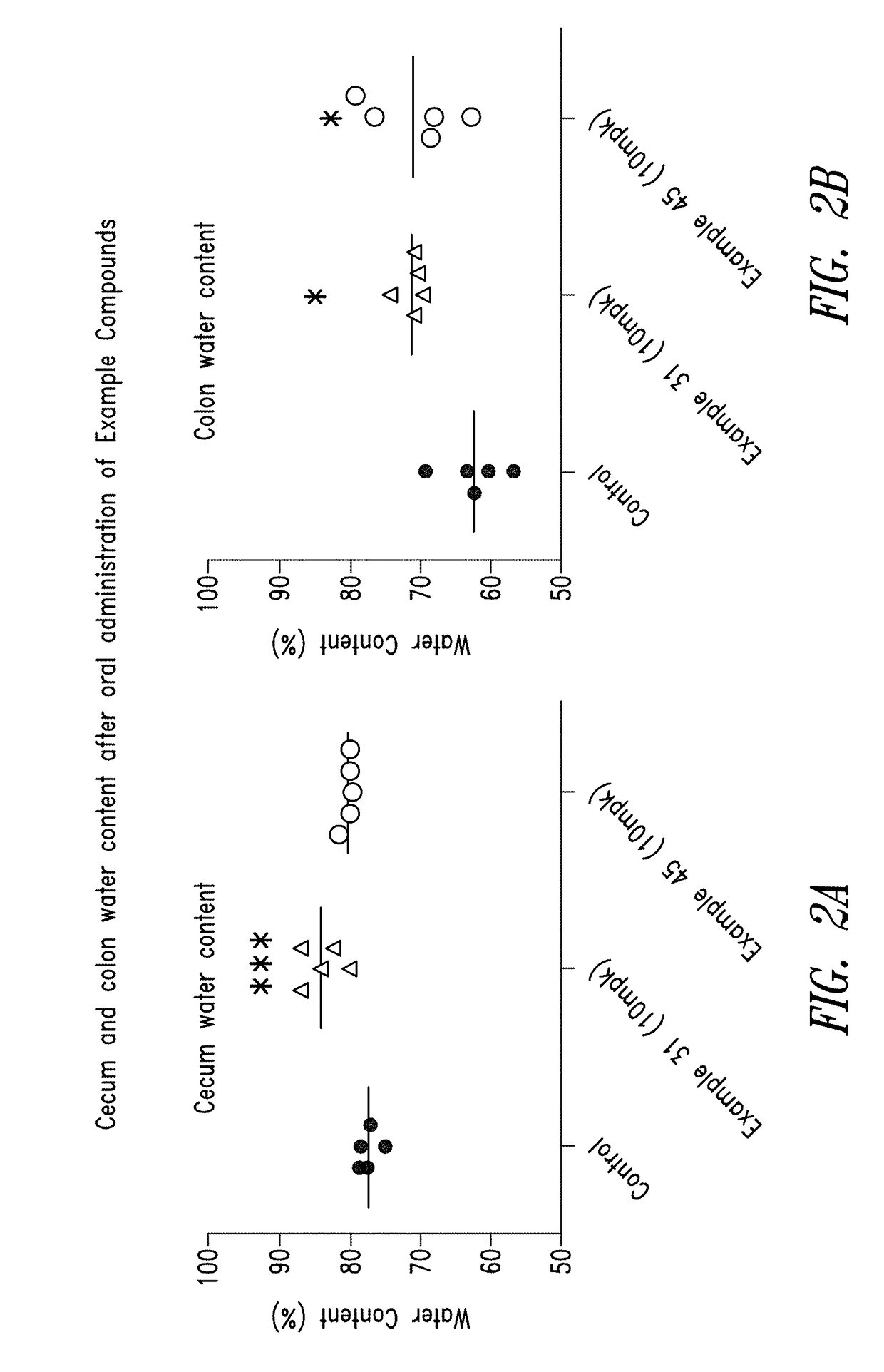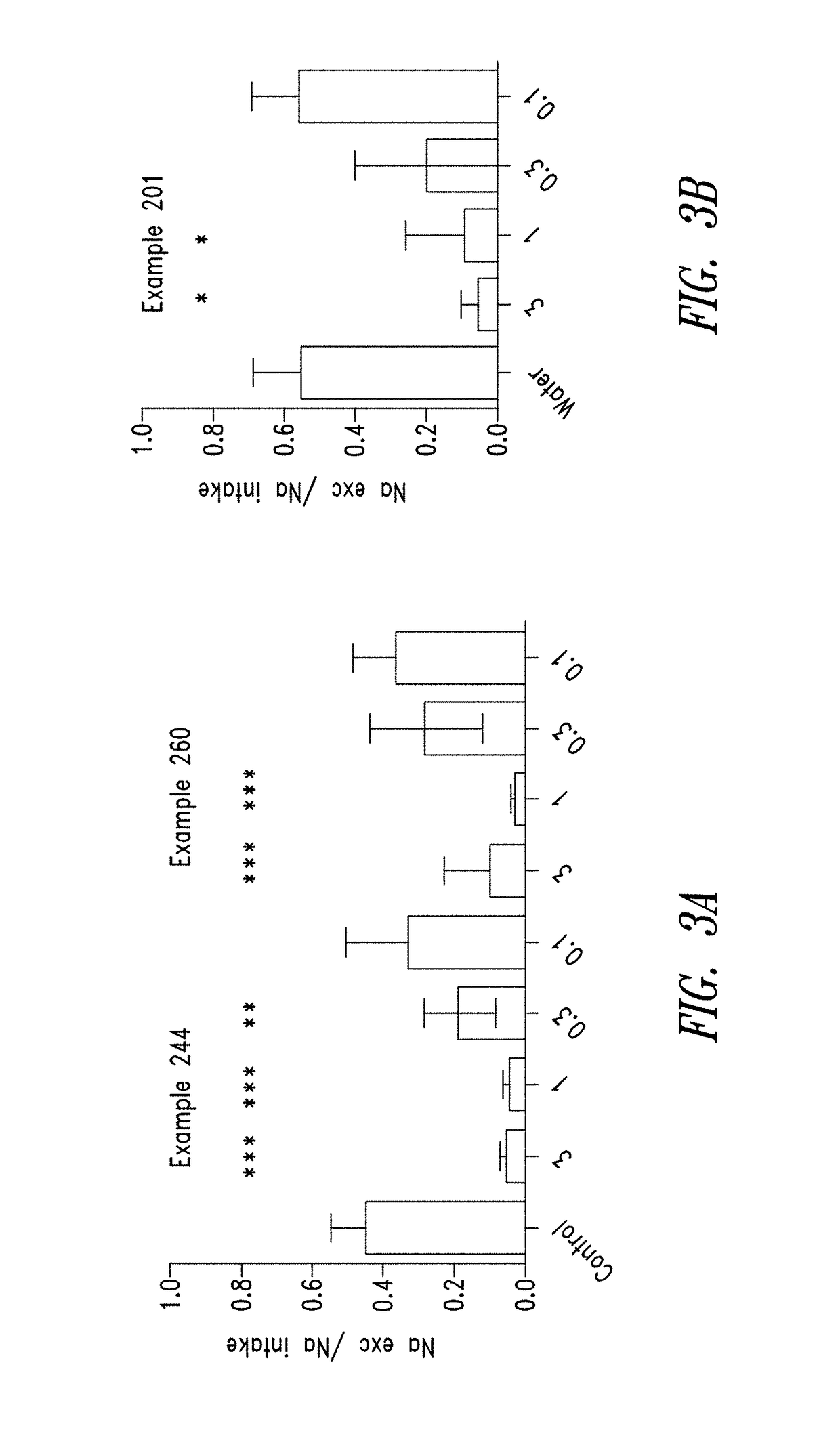Compounds and methods for inhibiting nhe-mediated antiport in the treatment of disorders associated with fluid retention or salt overload and gastrointestinal tract disorders
a technology of gastrointestinal tract disorders and compounds, which is applied in the direction of organic chemistry, amide active ingredients, group 5/15 element organic compounds, etc., can solve the problems of fluid entering the lungs and congestive symptoms, filling pressure may eventually increase, and shortening of breath, so as to reduce inflammation of the gastrointestinal tract, treat or reduce pain, and reduce visceral hypersensitivity
- Summary
- Abstract
- Description
- Claims
- Application Information
AI Technical Summary
Benefits of technology
Problems solved by technology
Method used
Image
Examples
example 1
2-(3-(6,8-dichloro-2-methyl-1,2,3,4-tetrahydroisoquinolin-4-yl)phenylsulfonamido)ethylphosphonic acid
[0400]
Intermediate 1.1: 2-bromo-1-(3-bromophenyl)ethanone
[0401]Into a 500-mL 3-necked round-bottom flask, was placed a solution of 1-(3-bromophenyl)ethanone (40 g, 202.02 mmol, 1.00 equiv) in acetic acid (200 mL). This was followed by the addition of a solution of Br2 (32 g, 200.00 mmol) in acetic acid (50 mL) dropwise with stirring at 60° C. The resulting solution was stirred for 3 h at 60° C. in an oil bath. The resulting mixture was concentrated under vacuum. The crude product was re-crystallized from petroleum ether:ethyl acetate in the ratio of 8:1. This resulted in 24 g (43%) of 2-bromo-1-(3-bromophenyl)ethanone as a yellow solid.
Intermediate 1.2: 1-(3-bromophenyl)-2-((2,4-dichlorobenzyl)(methyl)amino)ethanone
[0402]Into a 1 L 3-necked round-bottom flask purged and maintained with an inert atmosphere of nitrogen, was placed a solution of 2-bromo-1-(3-bromophenyl)ethanone (55 g, ...
example 2
4-(3-(6,8-dichloro-2-methyl-1,2,3,4-tetrahydroisoquinolin-4-yl)phenylsulfonamido)phenylphosphonic acid
[0412]
Intermediate 2.1: diethyl 4-nitrophenylphosphonate
[0413]Into a 100-mL 3-necked round-bottom flask purged and maintained with an inert atmosphere of nitrogen, was placed a solution of diethyl phosphonate (3.02 g, 21.88 mmol, 1.10 equiv) in toluene (10 mL), Pd(PPh3)4 (1.15 g, 1.00 mmol, 0.05 equiv), TEA (2.21 g, 21.88 mmol, 1.10 equiv), 1-bromo-4-nitrobenzene (4 g, 19.90 mmol, 1.00 equiv). The resulting solution was stirred for 15 h at 90° C. The solids were filtered out and the resulting mixture was concentrated under vacuum. The residue was applied onto a silica gel column and eluted with ethyl acetate / petroleum ether (1:2). This resulted in 3.53 g (68%) of diethyl 4-nitrophenylphosphonate as a yellow liquid.
Intermediate 2.2: diethyl 4-aminophenylphosphonate
[0414]Into a 50-mL round-bottom flask, was placed a solution of diethyl 4-nitrophenylphosphonate (1.07 g, 4.13 mmol, 1.00...
example 3
4-(3-(6,8-dichloro-2-methyl-1,2,3,4-tetrahydroisoquinolin-4-yl)phenylsulfonamido)benzylphosphonic acid
[0416]
Intermediate 3.1: diethyl 4-nitrobenzylphosphonate
[0417]Into a 250-mL round-bottom flask, was placed 1-(bromomethyl)-4-nitrobenzene (15 g, 69.77 mmol, 1.00 equiv), triethyl phosphite (70 mL). The resulting solution was stirred for 2 h at 110° C. in an oil bath. The resulting mixture was concentrated under vacuum. The residue was applied onto a silica gel column with ethyl acetate / petroleum ether (1:10-1:1). This resulted in 17 g (89%) of the title compound as a yellow oil.
Intermediate 3.2: diethyl 4-aminobenzylphosphonate
[0418]Into a 100-mL 3-necked round-bottom flask, was placed a solution of diethyl 4-nitrobenzylphosphonate (5 g, 18.32 mmol, 1.00 equiv) in ethanol (50 mL) and a solution of NH4Cl (2.9 g, 54.72 mmol, 2.99 equiv) in water (50 mL) was added. This was followed by the addition of Fe (4.1 g, 73.21 mmol, 4.00 equiv), while the temperature was maintained at reflux. T...
PUM
| Property | Measurement | Unit |
|---|---|---|
| tract disorder | aaaaa | aaaaa |
| neuropathic disorder | aaaaa | aaaaa |
| gastrointestinal transit time | aaaaa | aaaaa |
Abstract
Description
Claims
Application Information
 Login to View More
Login to View More - R&D
- Intellectual Property
- Life Sciences
- Materials
- Tech Scout
- Unparalleled Data Quality
- Higher Quality Content
- 60% Fewer Hallucinations
Browse by: Latest US Patents, China's latest patents, Technical Efficacy Thesaurus, Application Domain, Technology Topic, Popular Technical Reports.
© 2025 PatSnap. All rights reserved.Legal|Privacy policy|Modern Slavery Act Transparency Statement|Sitemap|About US| Contact US: help@patsnap.com



